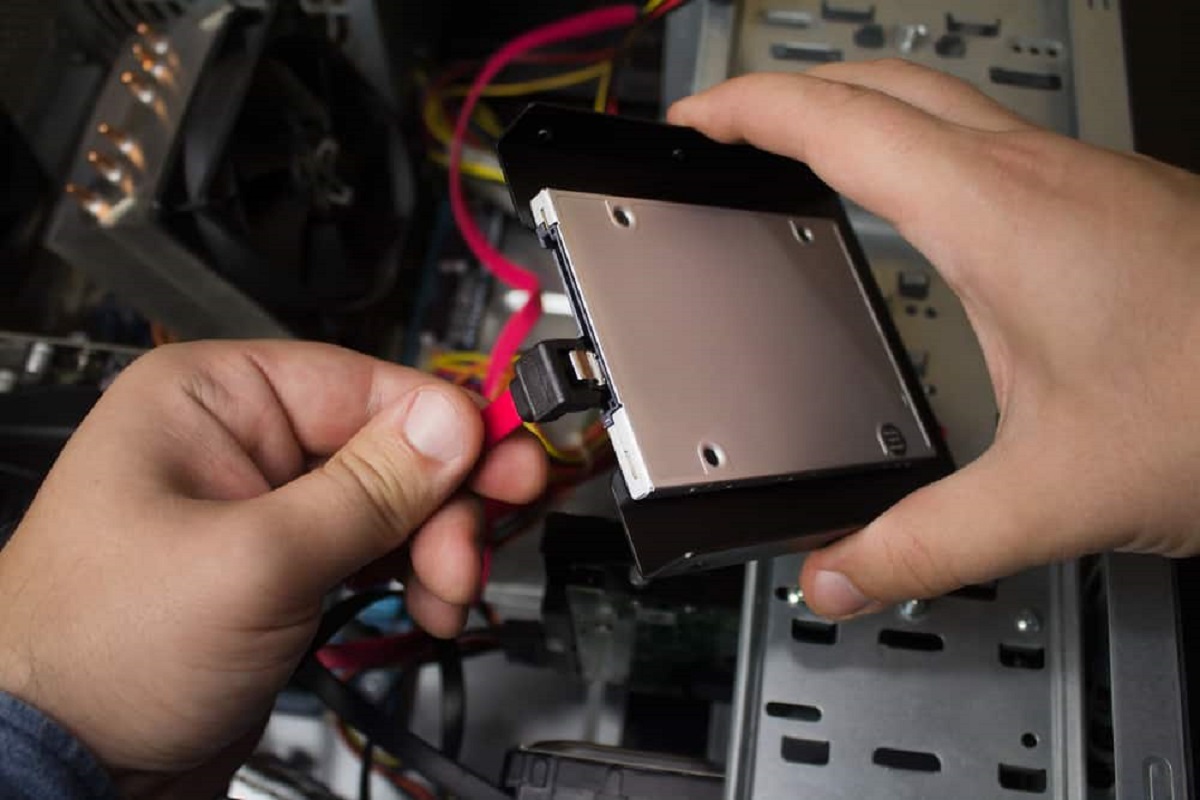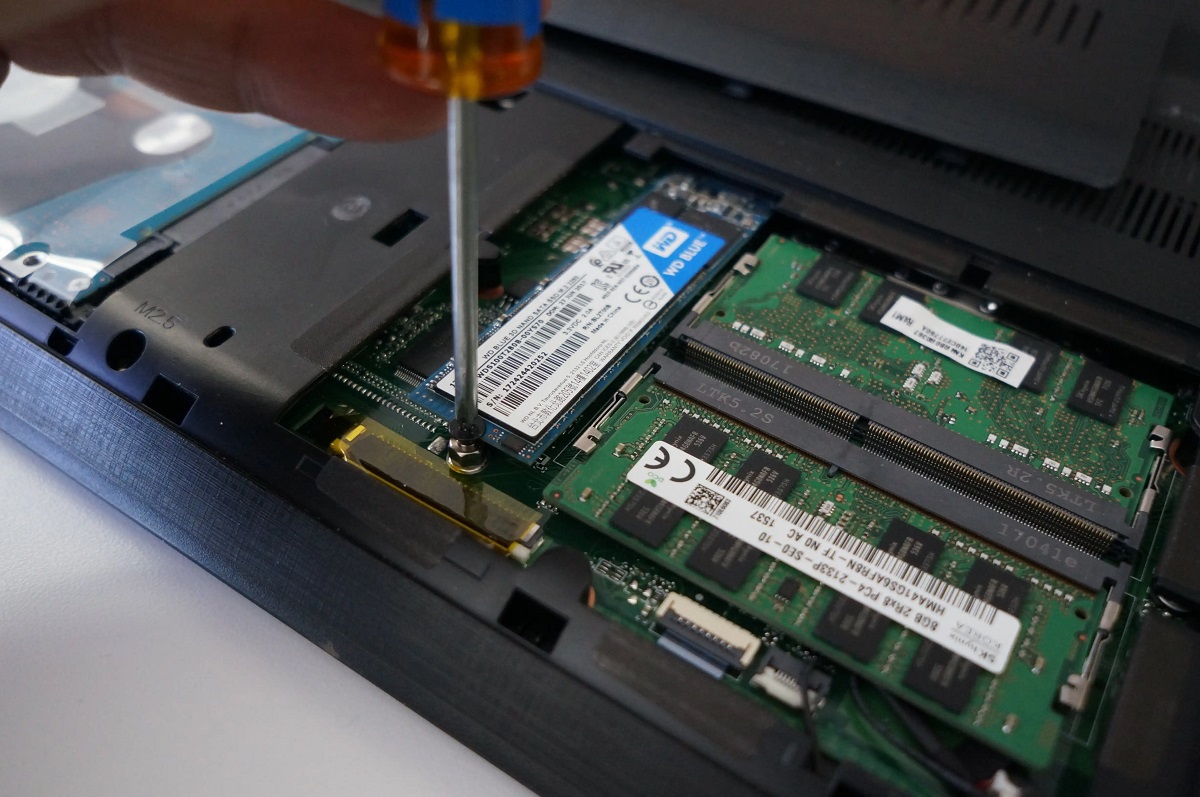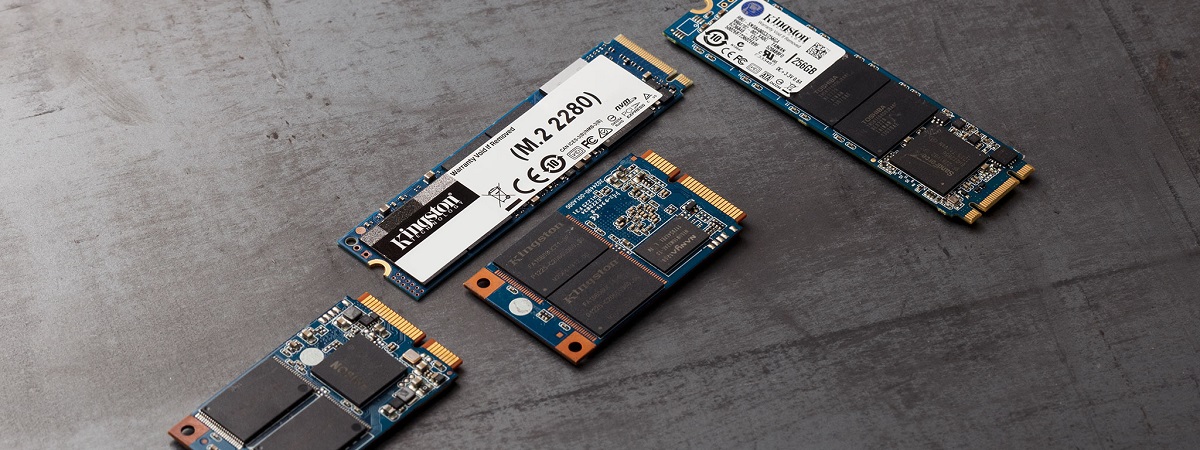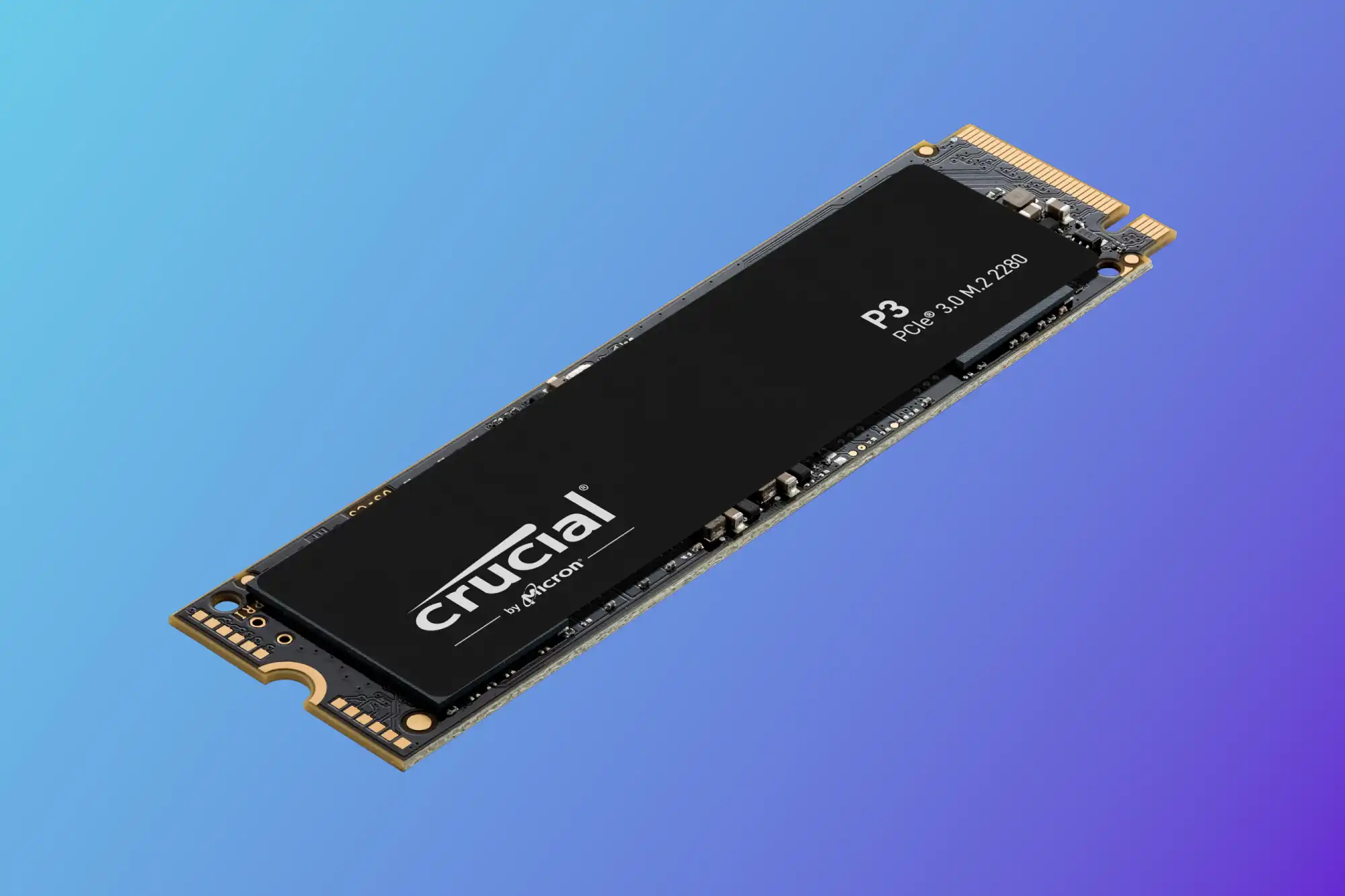Introduction
Welcome to the world of solid-state drives (SSDs)! In this digital age, data storage plays a vital role in our personal and professional lives. With the rapid advancement in technology, SSDs have become the preferred choice for many users due to their lightning-fast speeds and reliable performance. But have you ever wondered how long an SSD can retain data without power?
An SSD, short for solid-state drive, is a type of storage device that uses flash memory to store data. Unlike traditional hard disk drives (HDDs) that rely on spinning disks and mechanical parts, SSDs store information using non-volatile memory chips. This makes them faster, more durable, and less susceptible to mechanical failure.
Now, let’s explore the question that brought you here – how long can an SSD retain data without power? The answer lies in the way an SSD stores data and several other factors that influence its data retention capabilities.
When you save data on an SSD, it is stored in memory cells that contain electrical charges. These charges represent binary information, where a high charge indicates a “1” and a low charge indicates a “0”. Unlike traditional HDDs that use magnetized platters to store data, the absence of moving parts in an SSD allows for faster data access speeds and improved reliability.
However, unlike HDDs, SSDs require a constant electrical charge to maintain the integrity of the stored data. Without power, the charges in the memory cells slowly begin to dissipate over time. As a result, data stored on an unpowered SSD can start to degrade and may eventually become unreadable.
But how long can an SSD retain data without power? The answer varies depending on several factors that we will delve into in the following sections. These factors include temperature, usage patterns, and the overall quality of the SSD.
What is an SSD?
An SSD, short for solid-state drive, is a type of storage device that has become increasingly popular in recent years. As technology continues to advance at a rapid pace, SSDs are replacing traditional hard disk drives (HDDs) in many devices due to their superior performance and reliability.
Unlike HDDs, which use spinning magnetic disks and mechanical components to store and retrieve data, SSDs rely on flash memory. Flash memory is a type of non-volatile memory that retains data even when the power is turned off, making it ideal for long-term data storage.
The primary advantage of an SSD lies in its speed. With no moving parts, SSDs can access and transfer data much faster than HDDs. This means that your computer or device can boot up quickly, applications can launch in a matter of seconds, and file transfers can be lightning-fast.
Another advantage of SSDs is their durability. Since there are no mechanical components in an SSD, there are fewer chances of mechanical failure. This makes SSDs more resistant to shock and vibration, making them suitable for use in laptops, tablets, and other portable devices that may experience rough handling.
SSDs are also quieter and more energy-efficient compared to HDDs. With no moving parts, SSDs produce no noise, resulting in a quieter computing experience. Additionally, SSDs consume less power, which can significantly extend the battery life of laptops and other portable devices.
Over the years, SSD technology has evolved, leading to improvements in performance and capacity. Initially, SSDs were expensive and had limited storage capacity compared to HDDs. However, as technology has advanced, the cost of SSDs has come down, and higher-capacity models are now available at more affordable prices.
In summary, an SSD is a fast, reliable, and durable storage device that uses flash memory to store data. With their superior performance and benefits over traditional HDDs, SSDs have become the go-to choice for many individuals and businesses looking to enhance the speed and efficiency of their computing experience.
How Does an SSD Store Data?
Understanding how an SSD stores data can provide insights into its data retention capabilities. Unlike traditional hard disk drives (HDDs) that use spinning disks and magnetic platters, SSDs utilize a different approach called NAND flash memory.
NAND flash memory is a type of non-volatile memory that retains data even when power is turned off. It is made up of memory cells organized in a grid-like structure, with each cell capable of storing multiple bits of information.
When you save a file on an SSD, the data is first converted into binary code, consisting of ones and zeros. Each binary digit, or bit, is then stored in a memory cell. The cells themselves are divided into pages, and a group of pages is organized into blocks.
To write data to an SSD, the existing data in a block must first be erased. This process, known as garbage collection, is performed by the controller of the SSD. The controller marks the blocks that are no longer in use as empty and prepares them for writing new data.
When new data is to be written, the controller determines the appropriate empty block and programs the necessary bits into the memory cells within the block. This allows the SSD to store the binary representation of the data you save.
But what happens when you modify or delete data on an SSD? Unlike HDDs, which can simply overwrite or remove specific sections of data, SSDs have a more complex process. In order to modify existing data, the controller must first copy the entire block of data to a new location, make the necessary changes, and then erase the original block.
This process, known as wear leveling, helps distribute the writing and erasing actions across the different blocks of the SSD, prolonging the lifespan of the drive. Wear leveling ensures that no single block is excessively used, helping to maintain the overall performance and longevity of the SSD.
In summary, an SSD stores data using NAND flash memory, where binary bits are stored in memory cells organized in pages and blocks. The controller of the SSD manages the process of writing, modifying, and erasing data, utilizing techniques such as garbage collection and wear leveling to optimize performance and ensure the longevity of the drive.
How Long Can an SSD Retain Data Without Power?
One of the concerns when it comes to data storage is how long an SSD can retain data without power. Unlike volatile memory, such as RAM, which loses its stored information when power is turned off, SSDs are designed to retain data even without a constant electrical charge.
However, it’s important to note that the retention time of data on an unpowered SSD is not indefinite. The length of time an SSD can retain data without power is influenced by various factors.
The first factor to consider is temperature. High temperatures can accelerate the degradation of data in an SSD. Therefore, storing an SSD in a cool and stable environment can help prolong its data retention time. It’s recommended to keep the temperature within the manufacturer’s specified range for optimal performance and longevity.
The usage patterns of an SSD also play a role in data retention time. If an SSD is frequently accessed or written to, its data retention capabilities may be reduced. Constant use of an SSD can cause the electrical charges in the memory cells to gradually decay. Therefore, limiting unnecessary writes and keeping write-intensive tasks to a minimum can help extend the data retention time of an SSD.
The overall quality of the SSD itself is another important factor. Higher-quality SSDs tend to have better data retention capabilities. This is because they are built with more durable and reliable components, which can better preserve the stored data over time. Investing in a reputable and well-known brand can increase the chances of having a long data retention period.
While specific data retention times can vary, it is generally accepted that SSDs can retain data for approximately one to ten years without power. However, it’s important to note that this is an estimate and not a guarantee. The actual lifespan of data on an unpowered SSD can be influenced by the factors mentioned above.
To ensure the longevity and integrity of your data, it is recommended to regularly back up your SSD to another storage device or location. By creating backups, you can protect your data in the event of an unexpected failure or data loss.
In summary, an SSD can retain data without power for a considerable period, typically ranging from one to ten years. Factors such as temperature, usage patterns, and the quality of the SSD can influence the actual data retention time. By maintaining appropriate storage conditions and minimizing unnecessary usage, you can optimize the data retention capabilities of your SSD.
Factors Affecting SSD Data Retention
While solid-state drives (SSDs) are known for their data retention capabilities, it is important to understand that several factors can influence the lifespan of the stored data on an SSD. By considering these factors, you can take proactive measures to optimize data retention and ensure the longevity of your SSD.
The first factor to consider is temperature. High temperatures can have a negative impact on the data retention capabilities of an SSD. Extended exposure to high temperatures can cause the electrical charges within the memory cells to decay more rapidly, leading to data degradation. It is important to keep your SSD in a cool and well-ventilated environment to minimize the effects of temperature on data retention.
Usage patterns also play a significant role in the data retention capabilities of an SSD. The more frequently an SSD is accessed or written to, the more wear and tear it experiences, potentially reducing its lifespan. Write-intensive tasks, such as running virtual machines or constantly saving large files, can accelerate the degradation of an SSD. Therefore, it is advisable to limit unnecessary writes and perform regular maintenance to optimize data retention.
The quality and age of the SSD can also affect data retention. Higher-quality SSDs typically have better overall construction and more durable components. Investing in a reliable and reputable brand can increase the chances of having a longer data retention period. Additionally, the age of the SSD can impact its data retention capabilities. As an SSD gets older, its ability to retain data may decrease, making it important to monitor and plan for timely replacements if needed.
Another factor to consider is the power supply. While SSDs are designed to retain data without constant power, sudden power loss or voltage fluctuations can pose a risk to the stored data. It is essential to use a reliable power supply and consider implementing backup power solutions, such as uninterruptible power supply (UPS) devices, to safeguard against unexpected power interruptions.
Furthermore, the storage conditions of the SSD can impact data retention. Exposure to excessive moisture or humidity can lead to corrosion and damage to the internal components of an SSD. It is important to store the SSD in a dry and controlled environment to minimize the risk of data loss due to environmental factors.
In summary, several factors can impact the data retention capabilities of an SSD, including temperature, usage patterns, the quality and age of the SSD, power supply stability, and storage conditions. By being mindful of these factors and taking appropriate precautions, you can optimize data retention and ensure the longevity of your SSD.
Temperature
The temperature at which an SSD is stored and operated can significantly impact its data retention capabilities. Elevated temperatures can accelerate the degradation of stored data and reduce the overall lifespan of the SSD.
Heat is a major factor affecting the reliability and longevity of electronic components, including the memory cells within an SSD. Excessively high temperatures can cause the electrical charges in the memory cells to decay more rapidly, leading to data corruption and potential data loss.
Manufacturers typically provide a recommended operating temperature range for their SSDs, and it is crucial to adhere to these guidelines. Operating an SSD within the specified temperature range ensures optimal performance and minimizes the risks associated with data retention.
Similarly, it is important to consider the temperature of the storage environment when the SSD is not in use. Storing an SSD in a hot and humid environment can have detrimental effects on its data retention capabilities. Moisture and humidity can cause corrosion and damage to the internal components of the SSD, compromising its performance and lifespan.
If possible, storing the SSD in a cool, dry, and well-ventilated environment is recommended. This will help maintain a stable temperature and reduce the risk of heat-related issues that can impact data retention.
It is worth noting that extreme temperature fluctuations can also adversely affect an SSD. Rapid changes in temperature can cause expansion and contraction of the components, potentially leading to mechanical stress and degradation over time. It is best to avoid exposing the SSD to extreme temperature swings whenever possible.
In addition to controlling the temperature of the storage environment, proper airflow and cooling of the system in which the SSD is installed can contribute to maintaining the ideal temperature range. Ensuring adequate ventilation and avoiding obstructions to the airflow around the SSD can help dissipate heat and improve overall performance.
In summary, temperature plays a crucial role in the data retention capabilities of an SSD. Operating and storing the SSD within the recommended temperature range, preferably in a cool and dry environment, is essential for optimizing data retention and ensuring the longevity of the drive. Adequate ventilation and proper cooling of the system are also important factors to consider in maintaining the optimal temperature for the SSD.
Usage
The usage patterns of an SSD can significantly impact its data retention capabilities. Continuous and intensive use of the SSD can cause wear and tear on the memory cells, potentially reducing their ability to retain data over time.
Write-intensive tasks, such as running virtual machines, constantly saving large files, or performing frequent software installations, can contribute to increased wear on the SSD. Each write operation involves programming new bits into the memory cells and eventually erasing them when the data is no longer needed. The more frequently these write operations occur, the faster the memory cells may degrade.
To optimize data retention, it is recommended to minimize unnecessary write operations. This can be achieved by configuring the operating system and applications to store temporary files and caches in RAM instead of the SSD. Regularly clearing unnecessary files and properly managing disk space can also help reduce unnecessary writes and prolong the lifespan of the SSD.
Another aspect of usage to consider is the frequency of accessing the stored data on the SSD. While reading data does not cause as much wear as writing, constant access to the SSD can still contribute to the overall wear and degradation of the memory cells. This can have a cumulative effect over time, potentially impacting the data retention capabilities of the SSD.
Additionally, it is important to be mindful of sudden power losses or interruptions during active usage of the SSD. Sudden power loss can lead to incomplete write operations, potentially causing data corruption or loss. Investing in an uninterruptible power supply (UPS) or using a reliable power source can help mitigate the risks associated with sudden power interruptions.
Regular maintenance of the SSD, such as performing firmware updates provided by the manufacturer, can also contribute to ensuring optimal performance and data retention. Firmware updates often include improvements and bug fixes that can enhance the overall reliability and lifespan of the SSD.
In summary, the usage patterns of an SSD can impact its data retention capabilities. Minimizing unnecessary write operations, managing disk space effectively, and being mindful of sudden power losses can help optimize data retention. Regular maintenance and firmware updates can also contribute to ensuring optimal performance and prolonging the lifespan of the SSD.
Quality of SSD
The quality of the solid-state drive (SSD) itself is an important factor that can influence its data retention capabilities. Higher-quality SSDs tend to have more reliable components and better overall construction, which can contribute to better data retention and long-term durability.
When choosing an SSD, it is advisable to opt for reputable brands and models with a proven track record of reliability. These brands often invest in research and development to ensure their SSDs meet stringent quality standards.
Higher-quality SSDs undergo rigorous testing and validation processes during the manufacturing phase. This helps ensure that the memory cells and other components used in the SSD are of high quality and meet the required specifications. The use of better materials and manufacturing techniques can result in improved data retention capabilities.
Another aspect to consider is the controller chip used in the SSD. The controller is responsible for managing the data storage and retrieval processes. Higher-quality SSDs often feature advanced controllers that are designed to optimize performance and enhance data reliability. These controllers may incorporate features such as error correction codes (ECC) and wear leveling algorithms.
ECC helps detect and correct any errors that may occur during data storage or retrieval, improving the overall integrity of the stored data. Wear leveling algorithms distribute write and erase operations evenly across the memory cells, preventing certain cells from wearing out faster than others. This helps prolong the lifespan of the SSD and maintain consistent data retention capabilities.
Additionally, purchasing an SSD from a reputable brand often comes with the added benefit of customer support and warranty coverage. Reputable brands typically provide longer warranty periods, backup services, and helpful customer support in case of any issues or concerns with the SSD.
It is worth noting that while higher-quality SSDs may have better data retention capabilities, they often come at a higher cost compared to lower-quality options. However, investing in a high-quality SSD can provide peace of mind and potentially save you from data loss or drive failure in the long run.
In summary, the quality of the SSD is an essential factor when assessing its data retention capabilities. Higher-quality SSDs generally utilize reliable components, advanced controllers, and undergo rigorous testing and validation processes. While they may come at a higher cost, the peace of mind and extended lifespan they offer make them a worthwhile investment for the long-term reliability of your data.
How Can You Extend the Data Retention Time?
While solid-state drives (SSDs) have inherent data retention capabilities, there are steps you can take to extend the data retention time and ensure the long-term integrity of your stored data.
1. Maintain optimal storage conditions: Storing your SSD in a cool and dry environment can help preserve data retention. Excessive temperatures and high humidity levels can accelerate the degradation of the memory cells. Keep your SSD in a well-ventilated area and avoid exposure to direct sunlight or extreme temperature fluctuations.
2. Minimize unnecessary write operations: Excessive writing to an SSD can lead to wear and tear on the memory cells. Reduce unnecessary writes by managing disk space effectively, moving temporary files and caches to RAM or an alternative storage device, and avoiding write-intensive tasks when not required.
3. Adopt proper power management: Sudden power losses or fluctuations can disrupt write operations and potentially corrupt data. Using an uninterruptible power supply (UPS) or a reliable power source can safeguard your SSD from such instances and ensure smooth power transitions during operation.
4. Regularly update firmware: Manufacturers often release firmware updates to enhance the performance, reliability, and compatibility of SSDs. Keeping your SSD firmware up to date can help address any potential bugs or vulnerabilities that may impact data retention.
5. Perform regular backups: Even with precautions in place, data loss can still occur. Performing regular backups of your SSD’s data is an effective way to safeguard against unexpected drive failures or data corruption. Store your backups on reliable and secure storage devices or cloud services.
6. Monitor SMART data and health indicators: Most modern SSDs support Self-Monitoring, Analysis, and Reporting Technology (SMART) that provides data on the drive’s health and performance. Monitoring SMART data and looking out for warning signs such as increasing relocation counts or abnormal temperature readings can prompt proactive measures and prevent potential issues.
7. Upgrade to higher-quality SSDs: Higher-quality SSDs often offer better data retention capabilities due to superior components and rigorous manufacturing processes. Investing in a reputable and well-known brand can increase the chances of having a longer data retention period.
By implementing these practices, you can extend the data retention time of your SSD and minimize the risk of data loss. Remember that SSDs, like any storage medium, have a limited lifespan, so regular monitoring and proper maintenance are crucial for ensuring the long-term integrity of your data.
Conclusion
The data retention capabilities of solid-state drives (SSDs) are influenced by various factors such as temperature, usage patterns, quality of the SSD, and more. Understanding these factors and implementing best practices can help optimize data retention and ensure the long-term integrity of your stored data.
Temperature control is essential for preserving the data retention capabilities of an SSD. Storing the SSD in a cool and dry environment, avoiding excessive heat or humidity, and maintaining proper airflow and cooling within the system can all contribute to extended data retention times.
The usage patterns of an SSD also play a significant role. Minimizing unnecessary write operations, managing disk space effectively, and being mindful of sudden power losses can help optimize data retention and prolong the lifespan of the SSD.
The quality of the SSD itself is another crucial factor. Investing in a reputable brand and higher-quality SSDs can ensure better construction, more reliable components, and improved data retention capabilities. Regular firmware updates and proper maintenance of the SSD also contribute to its long-term performance and data retention.
To further extend the data retention time, it is advisable to perform regular backups of your SSD’s data. This safeguards against unexpected failures or data corruption, providing an additional layer of protection for your valued information.
In conclusion, by considering temperature control, monitoring usage patterns, selecting high-quality SSDs, performing regular backups, and adhering to best practices, you can optimize data retention and ensure the longevity of your SSD. Protecting your valuable data is of utmost importance, and taking these proactive measures will aid in maintaining the integrity of your stored information for years to come.

























